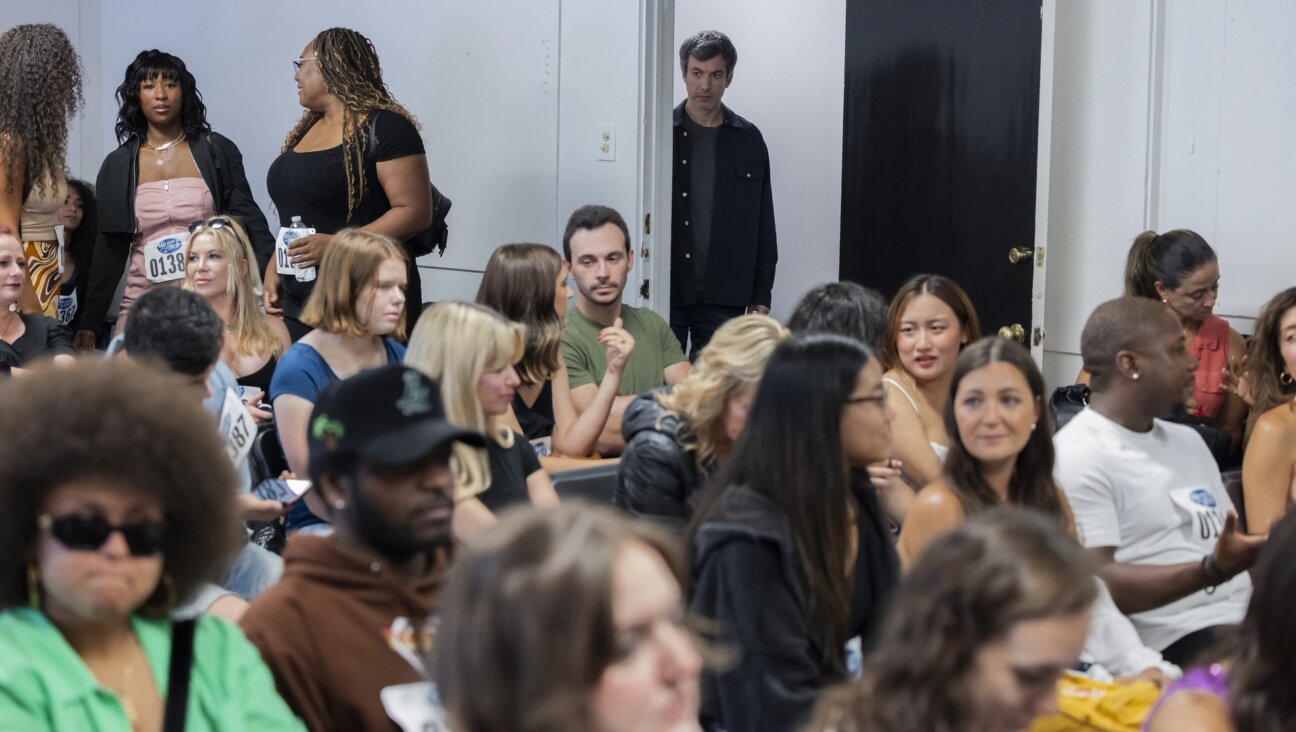From Frankfurt to New Haven

RECONSTRUCTION: In his new memoir, critic Geoffrey Hartman, a pioneer in the field of deconstruction, pieces together the world of his youth.
A Scholar’s Tale: Intellectual Journey of a Displaced Child of Europe

RECONSTRUCTION: In his new memoir, critic Geoffrey Hartman, a pioneer in the field of deconstruction, pieces together the world of his youth.
Fordham University Press, 160 pages, $24.95.
Memoirs of displacement often trace shadows cast by the world departed onto the world gained. In his new autobiography, literary theorist Geoffrey Hartman outlines in just this way the lasting effects on his life of the violent upheavals of the 20th century.
Hartman, born in Frankfurt, tells how he was rescued from Germany in 1939, at age 9, on a Kindertransport to the James Rothschild estate in England. To comfort himself in the alien environs, he began “to read for the wound,” and indulged in a “monkish ecstasy of reading everything.”
After rejoining his mother in America, Hartman eventually reached Yale University, where he would teach literature and preach deconstruction for almost 40 years, and where he would develop the friendships with Erich Auerbach, Harold Bloom, Jacques Derrida and Paul de Man that he sketches in the book. But even as he wrote on Wordsworth and the Romantic poets, and introduced French theory and its German sources to American readers, the past’s darker silhouettes imposed themselves onto the present. “The shadow of the Holocaust often waylays me,” Hartman writes.
On one level, Hartman’s early escape from fascism shaped his view of literary criticism itself, an art he calls “reading to the second power,” and an art that he suggests carries a humanizing force. Thus Hartman suspects that his investigation of the history of literary theory expressed the hope “that there would be some exit from history’s serial bloodiness back to the more durable republic of the arts.” He treated works of literature as if they, too, had survived; after the genocidal disruption of an entire culture, he felt the strong impulse to preserve them in all their multiplicity. He keenly sensed the contrast between what he calls literary criticism’s “rich, ungovernable variorum of interpretations” and the Nazis’ attempt to “cleanse” German culture.
On a deeper level, however, this memoir maps the ways early displacement lent Hartman his preoccupation with mediation. It is not only that he saw texts themselves as mediating between the Medusa of historical reality and himself (he talks here about “the paralyzing effect of confronting experience in its immediacy”); he also came to understand himself as a mediator — between Anglo-American and Continental modes of criticism, between specialized literary critics and the general reader and, most profoundly, between his literary self and his Jewish self.
As he recounts here, in the 1980s, late in his career, Hartman softened the hard lines of the abstruse deconstruction to which he had earlier dedicated himself, making an autodidactic turn toward Jewish texts and memory. He had already devoted his only book of poetry to the sage Rabbi Akiva, seeking “to thread and unthread the tangled ties of poetry and divinity,” as he puts it. But now he helped found Jewish studies at Yale, as well as the university’s Fortunoff Video Archive for Holocaust Testimonies, the first major collection of its kind. Hartman began to bring his scholarly attention to bear on Holocaust studies (as in his 1996 book, “The Longest Shadow” [Indiana University Press]).
Inspired by the Jewish idea that Scripture bears an infinite capacity for interpretation, Hartman also enjoyed a belated acquisition of the pleasures of midrash, and the wordplays, interpretive freedoms and daring leaps of exegesis that mark rabbinic reading. “Midrash showed that commentary could be a form of literature,” he writes.
This “Jewish turn” seems to have been set in motion by several impulses. First among them was the influence of Hartman’s wife, who had been deported at age 10 to Bergen-Belsen.
More interestingly, Hartman’s turn arrived after he rushed to the defense of de Man, following the scandalous revelations that his colleague had contributed to a Belgian collaborationist and antisemitic newspaper during World War II. Recalling the episode in this memoir, Hartman’s characteristic density and elusiveness of style spill over into equivocation. He repudiates de Man’s “coarse ideology,” but considers “the reaction of the mass media in the States historically naive and exploitative…. Unable to defeat deconstruction intellectually, its American opponents used the Holocaust cudgel against it.” In this instance, Hartman’s indeterminacy of vision has served him poorly. And perhaps Hartman himself sensed this when he was subsequently moved to shed light on the very subject his friend had shamefully obscured.
Most of all, however, Hartman’s turn is revealed here to be a return, a circling back to origins. At its best, Hartman’s unsentimental tale plots a fascinating course through a critic’s mind. That the resulting map, for all its complex contours and fine shadings, emanates from a single reference point — the early injury of dislocation — makes it all the more poignant.
Benjamin Balint is a writer living in Jerusalem.
The Forward is free to read, but it isn’t free to produce

I hope you appreciated this article. Before you go, I’d like to ask you to please support the Forward.
Now more than ever, American Jews need independent news they can trust, with reporting driven by truth, not ideology. We serve you, not any ideological agenda.
At a time when other newsrooms are closing or cutting back, the Forward has removed its paywall and invested additional resources to report on the ground from Israel and around the U.S. on the impact of the war, rising antisemitism and polarized discourse.
This is a great time to support independent Jewish journalism you rely on. Make a Passover gift today!
— Rachel Fishman Feddersen, Publisher and CEO
Most Popular
- 1

Opinion My Jewish moms group ousted me because I work for J Street. Is this what communal life has come to?
- 2

News Student protesters being deported are not ‘martyrs and heroes,’ says former antisemitism envoy
- 3

Fast Forward Suspected arsonist intended to beat Gov. Josh Shapiro with a sledgehammer, investigators say
- 4

Politics Meet America’s potential first Jewish second family: Josh Shapiro, Lori, and their 4 kids
In Case You Missed It
-

Culture Actor Ben Platt says his Jewish identity is ‘not defined’ by Israel, showing a gap between him and his influential family
-

Fast Forward Shapiro house fire suspect targeted Jewish governor over pro-Israel stances, search warrant says
-

Fast Forward Jewish family killed in New York plane crash
-

Fast Forward Israelis can no longer enter the Maldives after Palestinian-solidarity ban goes into effect
-
Shop the Forward Store
100% of profits support our journalism
Republish This Story
Please read before republishing
We’re happy to make this story available to republish for free, unless it originated with JTA, Haaretz or another publication (as indicated on the article) and as long as you follow our guidelines.
You must comply with the following:
- Credit the Forward
- Retain our pixel
- Preserve our canonical link in Google search
- Add a noindex tag in Google search
See our full guidelines for more information, and this guide for detail about canonical URLs.
To republish, copy the HTML by clicking on the yellow button to the right; it includes our tracking pixel, all paragraph styles and hyperlinks, the author byline and credit to the Forward. It does not include images; to avoid copyright violations, you must add them manually, following our guidelines. Please email us at [email protected], subject line “republish,” with any questions or to let us know what stories you’re picking up.















